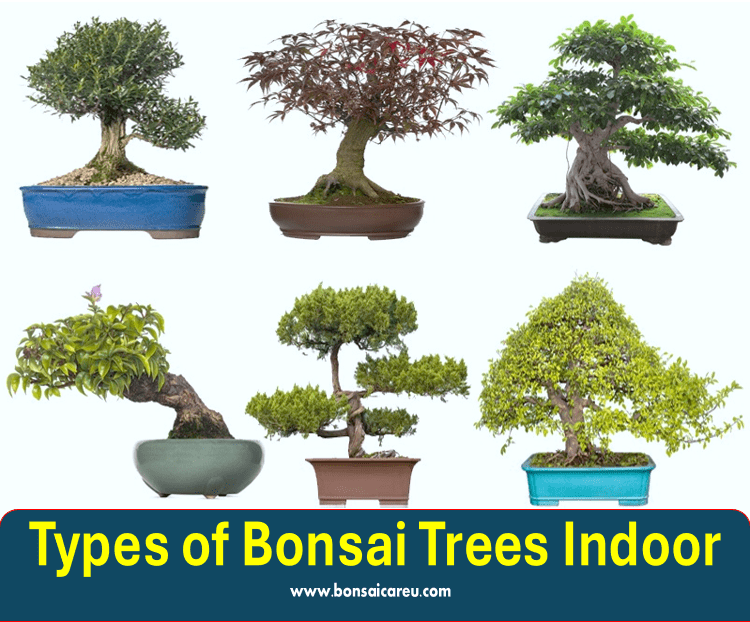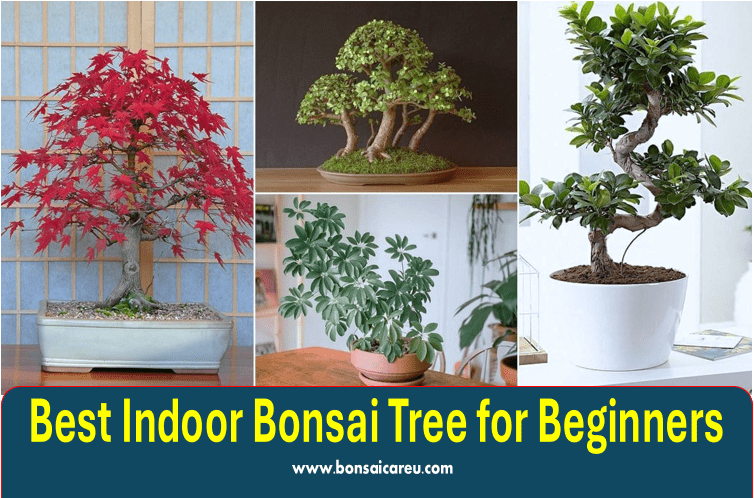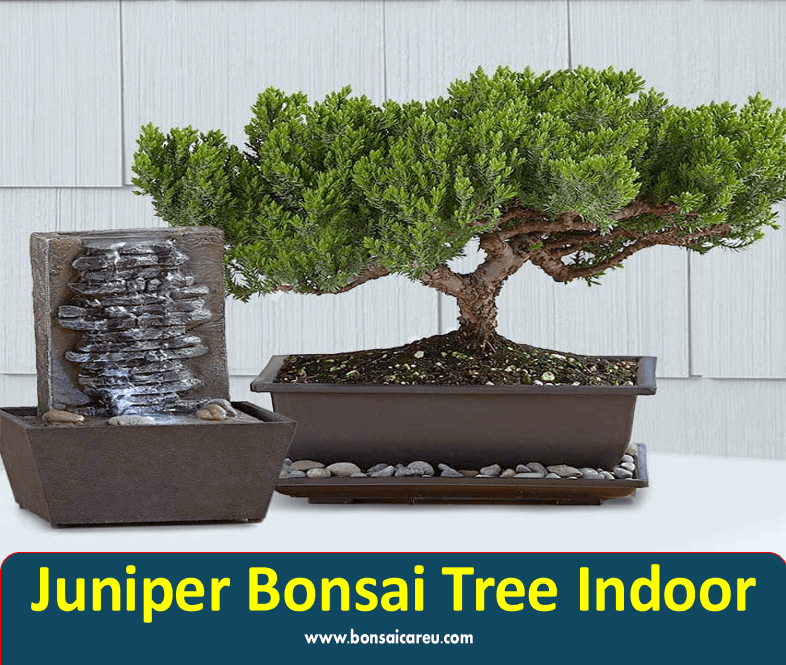Juniper Bonsai Indoors: Juniper bonsai can thrive indoors, making it a popular choice for indoor gardening enthusiasts. When properly cared for, these miniature trees can bring peace and tranquility to any space.
With their small size and unique characteristics, juniper bonsai is a great addition to your indoor plant collection. Whether you’re a beginner or a seasoned gardener, growing a juniper bonsai indoors can be a rewarding experience. This guide will explore everything you need to know about caring for a juniper bonsai tree indoors, from choosing the right variety to providing the ideal growing conditions.
So, let’s dive in and discover the world of indoor juniper bonsai trees.
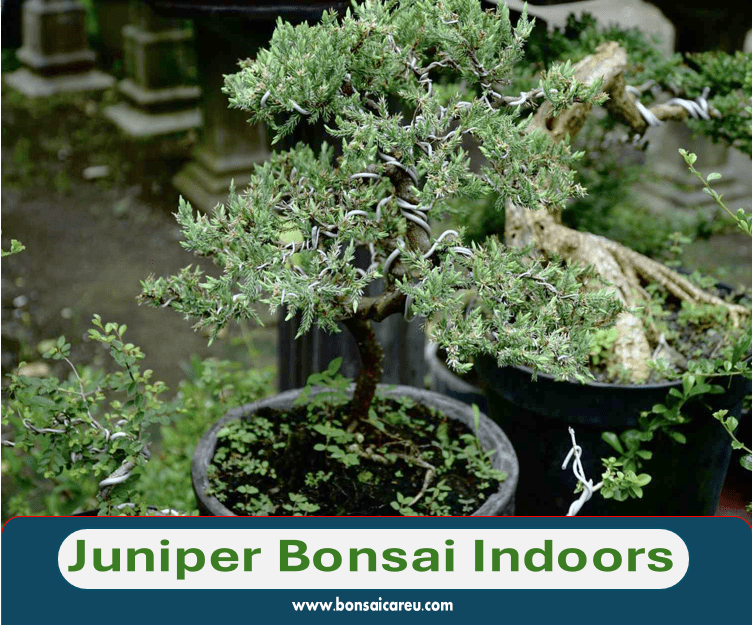
Choosing The Right Juniper Bonsai
When it comes to deciding which juniper bonsai to bring indoors, there are a few factors you need to consider. From the species of juniper to the size and shape of the tree, each aspect plays a crucial role in determining the perfect fit for your indoor space. Take time to evaluate these factors, and you’ll be rewarded with a beautiful juniper bonsai that will thrive in your home.
Consider The Juniper Species
The first step in selecting the right juniper bonsai for indoor cultivation is considering the species. While various species of juniper are available, not all are well-suited for indoor environments. Some species, such as Juniperus procumbens, Juniperus chinensis, and Juniperus rigida, are more adaptable to indoor conditions, making them excellent choices for bonsai enthusiasts. These species are known for tolerating lower light levels and better adapting to indoor environments’ limited space.
When selecting a juniper bonsai for indoor cultivation, pay attention to the specific cultivar or variety within the species. Different varieties can display variations in growth habits, leaf color, and overall appearance. Consider the characteristics that appeal to you the most, like compact growth, unique foliage, or interesting bark texture.
Evaluate The Size And Shape
Another essential aspect to consider when choosing a juniper bonsai is its size and shape. Bonsai trees come in various sizes, ranging from petite miniatures to larger, more substantial specimens. Assess the space available in your home and determine the ideal size to complement your indoor setting.
Regarding shape, juniper bonsai trees offer a wide range of options. Some popular shapes include the formal upright, cascading, slanting, and windswept styles. Each shape has a unique aesthetic, and you should choose a shape that resonates with your preferences.
| Bonsai Shape | Description |
|---|---|
| Formal Upright | Straight and upright with a slight taper. |
| Cascading | Flowing branches cascade downward for a dramatic effect. |
| Slanting | Characteristic leaning trunk that adds a sense of movement. |
| Windswept | Twisted and bent branches evoke the impression of wind-blown trees. |
Ultimately, the size and shape of your juniper bonsai should harmonize with your interior decor and personal taste. Consider the space and style of your home when selecting the right bonsai tree to create a visually appealing and balanced arrangement.
Understanding Indoor Growing Conditions
Understanding Indoor Growing Conditions is essential for successfully cultivating Juniper Bonsai indoors. By ensuring optimal light requirements and maintaining humidity levels, you can create a favorable environment for the growth of your miniature tree.
Optimal Light Requirements
Juniper Bonsai thrives in bright indirect light, ideally by a south-facing window that receives ample sunlight throughout the day. Artificial grow lights can also be used effectively.
Maintaining Humidity Levels
Humidity is crucial for a Juniper Bonsai’s health. To simulate its natural environment, keep humidity between 50% and 75% by using a humidity tray or regular misting.
Watering And Feeding Techniques
Balancing Watering Frequencies
Juniper bonsai trees need consistent moisture levels in the soil.
Overwatering can lead to root rot while underwatering results in drying out.
Check the soil moisture by poking a finger into the soil up to an inch deep.
Ensure the soil is slightly damp but not soggy before watering again.
Avoid a fixed watering schedule; adjust based on the environment and season.
Selecting The Right Fertilizer
Choose a balanced liquid fertilizer specifically for bonsai plants.
Feed your Juniper bonsai from early spring to late summer every 2-4 weeks.
In autumn and winter, reduce feeding to once every 6-8 weeks.
Avoid over-fertilizing as it can lead to salt buildup and damage the roots.
Pruning And Training Methods
Pruning and training methods are crucial for maintaining the health and aesthetics of your Juniper Bonsai indoors. Proper care ensures the bonsai’s growth is controlled and shaped according to your preferences.
Shaping The Bonsai
Shaping your Juniper Bonsai involves strategically trimming branches to achieve the desired form. Check the bonsai’s shape regularly and adjust pruning accordingly.
Understanding Pruning Techniques
Mastering pruning techniques is essential. Use sharp scissors to make clean cuts, delicately removing dead or overgrown branches.
- Pinching: Pinch off the new growth to maintain the bonsai’s shape.
- Thinning: Thinning out excess branches helps improve air circulation and light exposure.
Training Methods
| Wiring: | Use bonsai wire to guide branches into the desired position gently. |
| Clip and Grow: | Allow new shoots to grow and trim them back to encourage ramification. |
Consistent training and pruning will result in a healthy and beautifully shaped Juniper Bonsai, perfect for indoor display.
Pest And Disease Management
When nurturing juniper bonsai indoors, being vigilant about potential pests and diseases affecting the plant’s health is crucial. Recognizing common pests and employing preventative measures is essential to maintain the beauty and vigor of your juniper bonsai.
Recognizing Common Pests
Aphids, spider mites, and scale insects are common pests that can threaten juniper bonsai plants. These pests are often identified by the presence of small, visible insects on the foliage, as well as webbing in the case of spider mites. Additionally, look for yellowing or wilting leaves, which could indicate a pest infestation.
Preventative Measures
- Regularly inspect the juniper bonsai for signs of pests and disease.
- Keep the plant well-watered and ensure proper drainage to prevent root rot.
- Prune and trim the bonsai as needed to maintain optimum air circulation.
- Utilize organic insecticidal soaps or neem oil to deter pests while minimizing harm to beneficial insects.
- Consider using natural predators, such as ladybugs, to control pest populations in a non-toxic manner.
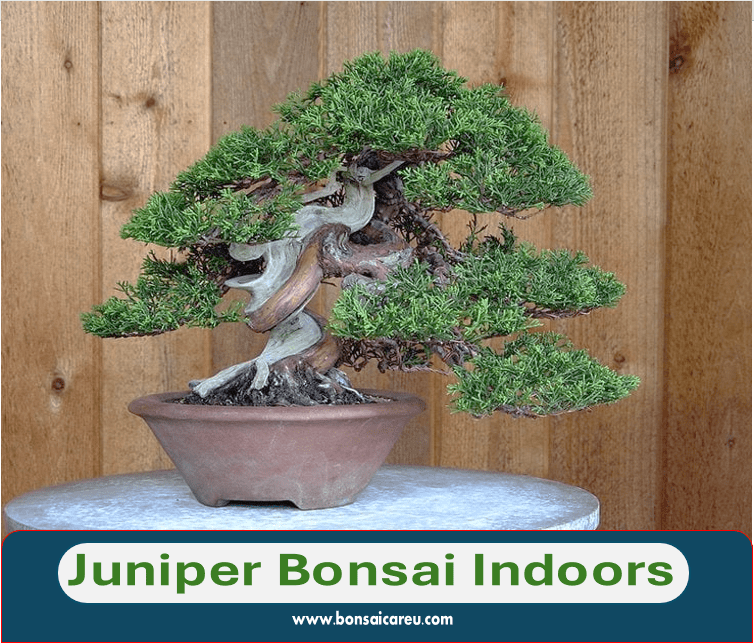
Seasonal Care Guidelines
`Seasonal care guidelines are crucial for maintaining the health and well-being of your indoor Juniper Bonsai. Adapting to seasonal changes and understanding the winter dormancy period are essential aspects of caring for your Juniper Bonsai throughout the year. Proper care during each season is vital to ensure the longevity and vitality of your bonsai.`
Adapting To Seasonal Changes
Juniper Bonsai requires attentive care and adjustments to environmental changes during different seasons. Understanding how seasonal variations affect your bonsai’s growth and health is necessary for providing proper care. Adapt your watering and light exposure based on the specific needs of your Juniper Bonsai during each season. Implementing these changes proactively will contribute to the overall well-being of your bonsai.
winter Dormancy Period
During the winter months, your Juniper Bonsai enters a dormancy period where its growth slows down. This period is crucial for the plant’s health and vitality as it prepares for the upcoming spring season. Reduce watering frequency, but ensure the soil does not completely dry out. Position your bonsai in a cooler location to mimic natural winter conditions. Regularly check for any signs of pests or diseases and address them promptly to maintain the health of your Juniper Bonsai during this dormant phase.
Showcasing Your Juniper Bonsai
Discover the art of showcasing your indoor juniper bonsai with finesse, enhancing its beauty, and creating a serene atmosphere in your home. Expert tips and creative ideas to bring out the best in your juniper bonsai are waiting for you.
Choosing The Right Display
When showcasing your Juniper Bonsai, choosing the right display is essential. Like any work of art, your bonsai display can greatly enhance its beauty and impact. The purpose of a bonsai display is to create a harmonious and elegant setting that complements the tree, allowing it to shine in its full glory. To choose the right display for your Juniper Bonsai, consider the following factors:
- Size and Style: Consider the size and style of your bonsai tree. A larger tree might require a more spacious display, while a smaller tree can be displayed in a more compact setting. Additionally, consider the overall style of your bonsai. Is it a formal, upright tree or a cascading, informal one? Select a display that suits the aesthetics of your tree.
- Pot: The pot where your bonsai grows is integral to the display. Choose a pot that complements the style and color of your tree. Traditional pots made of ceramic or porcelain are popular choices, but you can also experiment with other materials like stone or wood for a unique look.
- Stand: A display stand can elevate your bonsai, literally and figuratively. It provides a sturdy base for your tree and adds visual interest to the overall presentation. Consider different stand styles, such as a traditional wooden stand or a modern metal one, to suit your taste and enhance the display.
- Accents: To enhance the display further, you can incorporate various accents alongside your Juniper Bonsai. Miniature figurines, moss, rocks, or other small plants can be strategically placed to create a more immersive and captivating display.
Participating In Bonsai Exhibitions
Participating in bonsai exhibitions can be an exciting way to showcase and share your Juniper Bonsai with a wider audience. Additionally, exhibitions provide an opportunity to learn from experienced bonsai enthusiasts and gain valuable insights into the art of bonsai.
Here are a few considerations for participating in bonsai exhibitions:
- Preparation: Before participating in an exhibition, ensure your Juniper Bonsai is in its best condition. Trim and shape the tree, prune any dead branches, and remove unwanted growth. Clean the pot and display carefully, ensuring everything looks neat.
- Documentation: Exhibitions often require proper documentation, such as labels and tags, to identify your bonsai. Please provide accurate information about your Juniper Bonsai, including its species, age, and any significant details about its cultivation or styling.
- Presentation: Display your bonsai in a visually appealing manner at the exhibition. Use the guidelines provided by the organizers regarding the placement, spacing, and lighting of the displays. Pay attention to the overall aesthetics and ensure that your Juniper Bonsai is the highlight of your display.
- Engagement: Participating in exhibitions also provides an opportunity to engage with fellow bonsai enthusiasts and visitors. Be prepared to answer questions about your Juniper Bonsai and share your passion for the art of bonsai.
Take the time to appreciate other bonsai displays and learn from the experiences and expertise of others.
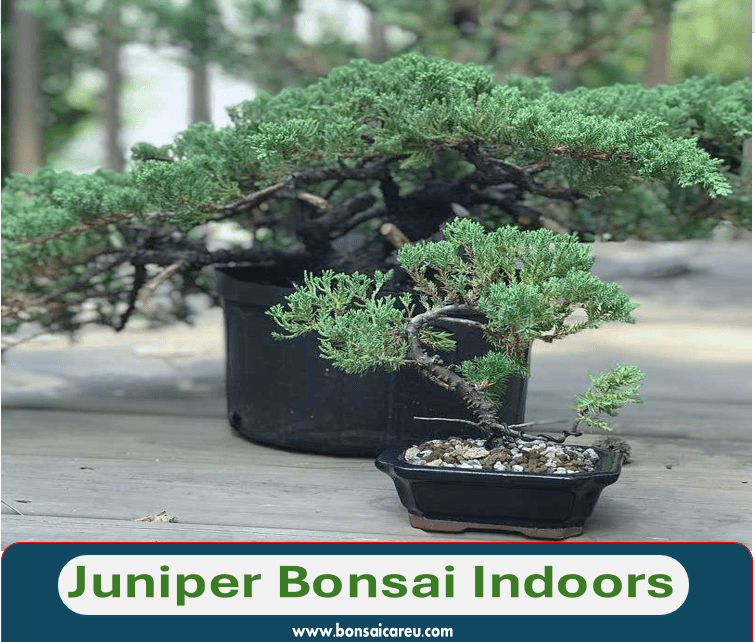
Frequently Asked Questions Of Juniper Bonsai Indoors
Can You Grow Juniper Bonsai Trees Indoors?
Yes, juniper bonsai trees can be successfully grown indoors with proper care and attention. To ensure the tree thrives in this environment, it is important to provide adequate light, humidity, and water.
Why Can’t Juniper Live Indoors?
Junipers need sunlight and cold temperatures, which are hard to replicate indoors. They also need well-draining soil and good air circulation.
Does Juniper Bonsai Need Sunlight?
Juniper bonsai needs sunlight to thrive. It requires direct sunlight for at least four hours a day. Sunlight helps in photosynthesis, maintaining the plant’s health and promoting growth. Place your juniper bonsai in a spot with ample sunlight for best results.
Is It OK to Keep A Bonsai Tree Indoors?
It is okay to keep a bonsai tree indoors as long as it receives enough light.
Can Juniper Bonsai Thrive Indoors?
Juniper bonsai can thrive indoors with proper care, light, and humidity.
How Often Should I Water Indoor Juniper Bonsai?
Water your indoor juniper bonsai when the topsoil feels slightly dry.
What Light Conditions Are Best For Indoor Juniper Bonsai?
Place your indoor juniper bonsai in a location with bright, indirect sunlight for optimal growth.
Conclusion
To summarize, growing a Juniper Bonsai indoors can be a rewarding experience for both beginners and experienced gardeners. You can create a beautiful and thriving miniature tree by providing the right conditions, such as ample sunlight, proper watering, and occasional pruning.
Remember to choose the right Juniper variety, monitor its health, and enjoy the calming presence of this majestic bonsai plant in your indoor space. Happy gardening!
